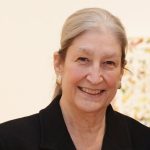Florence is home to 70 museums, both large and small, but its art history is mainly concentrated in three of the city’s most visited galleries—the Uffizi, the Palatine at the Pitti Palace and the Academia.
The Uffizi holds the Medici family collection, which begins with Cosimo I and ends with the last Medici, Anna Maria Luisa. It includes 2,000 works on display, with just as many works in storage. The Palatine Gallery collection of paintings and furniture was primarily acquired in the 17th and 18th centuries by the Medici and Lorraine Grand Dukes. It consists of 1,000 works, displayed in six different galleries. The Academia originally collected Florentine masterpieces, particularly Michelangelo’s works. It was created to train students from the Academy of Fine Arts, next door, in the art of drawing.
But what about the lesser-known museums and places of interest? Below are a few of options for those looking for alternative ways to enjoy this wonderful art-filled city.
CASA GUIDI
Piazza San Felice, 8
Tel: 055/354457
Open Monday, Wednesday & Friday,
3pm–6pm; April to November
Entrance: free
After their secret marriage in 1847, English writers Robert and Elizabeth Barrett Browning, rented an apartment named ‘Casa Guidi’ in the palazzo of the same name. The couple remained there until Elizabeth’s death in 1861. (Elizabeth is buried in the English Cemetery in Florence, and her tomb was designed by her husband.)
Much of their better-known poetry was written in Florence. She wrote Casa Guidi Windows, a re-telling of events surrounding the Italian Risorgimento, as well as the famed Aurora Leigh. Robert wrote The Ring and the Book and various poems about famous painters who inspired him, including ‘Fra Lippo Lippi’ and ‘Andrea del Sarto’. Currently owned by Eaton College, the apartment is leased to Landmark Trust.
MUSEO MARINO MARINI
via della Vigna Nuova, 1
Open Monday, Wednesday and
Friday, 10am–5pm
Tel: 055-219432
Entrance fee: 4 euro
180 works by one of Italy’s best 20th-century sculptors, Marino Marini (1901–1980), can be found in this museum. The artist and his wife Marina left the entire collection to the city of Florence.
Museo Marino Marini is housed in the ancient ninth-century church of S. Pancrazio. Deconsecrated in 1809, the building served as a police station, a tobacco warehouse and an iron gallery before it was finally converted into a museum in 1988. Extensive restoration work created modern exhibition spaces from the mezzanine to the crypt. Marini’s dominant equestrian group, for example, is displayed in the center of the original liturgical space, dramatically surrounded by natural light coming from the large, semi-circular lunette. Marini is best known for his bronze male nude horse-back rider, Gentleman on Horseback. Arranged by subject matter, the collection includes sculptures, plaster casts, drawings and etchings.
CHIOSTRO DELLO SCALZO
(Cloister of the scalzo)
via Cavour 69
(just past the church of San Marco)
Open Monday, Thursday and
Saturday, 8:15am–1:50pm
(Times seem to vary;
it’s best to call before going.)
Tel: 055/288604
Entrance: free
Founded in 1376, this small, modest, cloister was designed for the Confraternity of the Disciplinati of St. John the Baptist. It was called scalzo, or ‘barefoot’, because the friars carried the cross with bare feet. The property was sold in 1785, except for the cloister.
The cloister is a quiet, meditative place with very few visitors. It contains a series of 16 frescoes, in chiaroscuro, depicting the virtues and the life of St. John the Baptist, painted by Andrea del Sarto (1486–1530). Begun in 1509 and completed in 1526, the frescoes reveal del Sarto’s artistic development during those 17 years. Two of the scenes, Meeting of Baby Jesus and Baby Saint John were painted by his assistant, Franciabigio (1482–1525), while del Sarto was in Paris in 1518.
The sculptural clarity and elaborate architectural setting of these frescoes set a new standard in monumental fresco painting. In general, del Sarto’s works were unrivalled at this time, with their color and atmosphere. These monotone frescoes are, therefore, particularly unusual. It’s interesting to note that del Sarto was Pontormo’s teacher.
MUSEO DIOCESANO DI SANTO STEFANO AL PONTE
Piazza Santo Stefano, 5
Open Monday through Friday, 3:30pm–6:30pm
Tel: 055/225843
Located right next to Ponte Vecchio, this small museum opened in 1996. It displays sacred art that was taken from churches that have been deconsecrated over the years. Designed on three levels—the cloister, the old refectory and the corridor—masterpieces such as the Madonna in Trono, an early work by Giotto; Saint Julian by Masolino; and a predella by Paolo Uccello can be found there.








